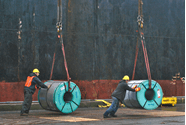Market Data

February 13, 2021
Steel Product Shipments and Inventories through December
Written by David Schollaert
Steel product shipments continued to improve through December, reporting an increase for the ninth consecutive month. Steel product shipments exceeded pre-pandemic levels to close out the year following a steady but slow rebound since reaching bottom in April 2020, according to Census Bureau data on inventories, shipments and new orders for total U.S. manufacturing and steel products.
Total shipments and inventories are reported in millions of dollars, seasonally adjusted. Year over year through December, total manufactured product shipments rose by 0.1%, the first positive mark all year. Steel product shipments were up from positive 0.2% in November to 2.8% in December. Figure 1 and Figure 2 show the history of both since 2005. During the first wave of the global pandemic in April, total manufacturing shipments plunged by 19.4% and steel product shipments fell by 21.4% compared with the prior year. Both have steadily recovered since, helping 2020 close out with some optimism.
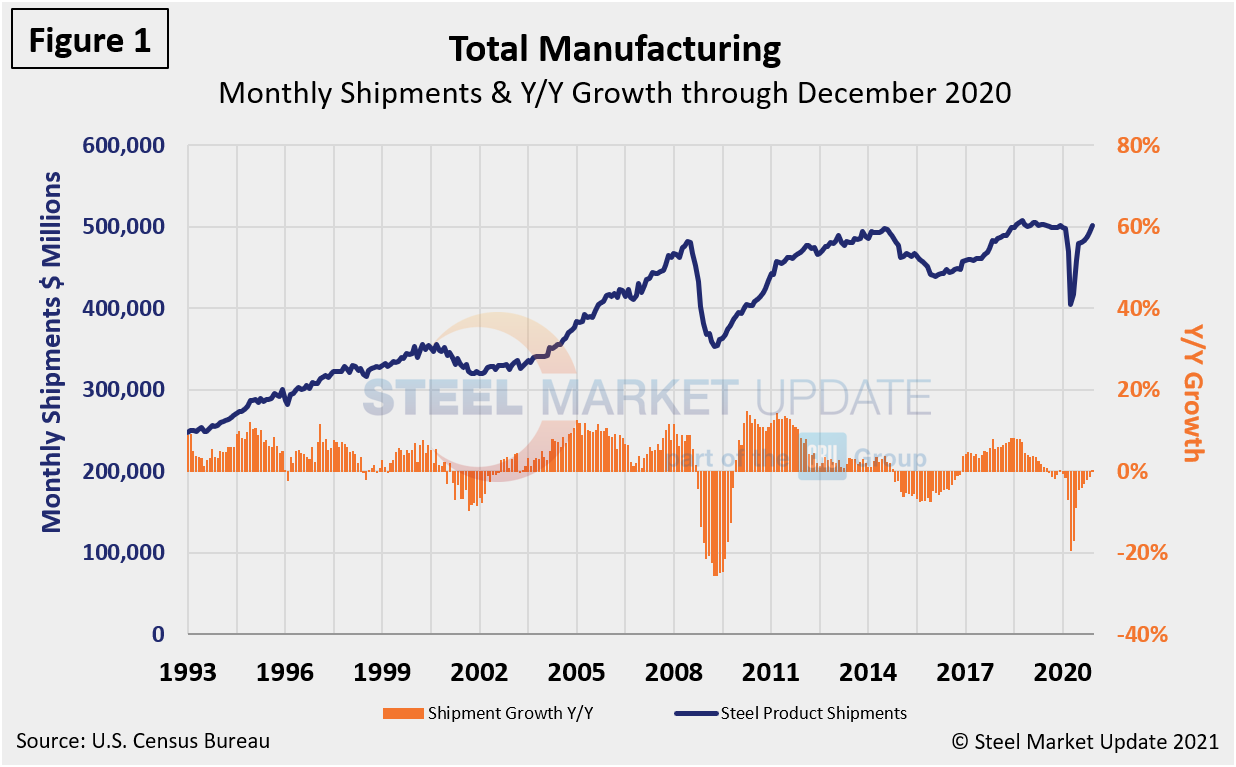
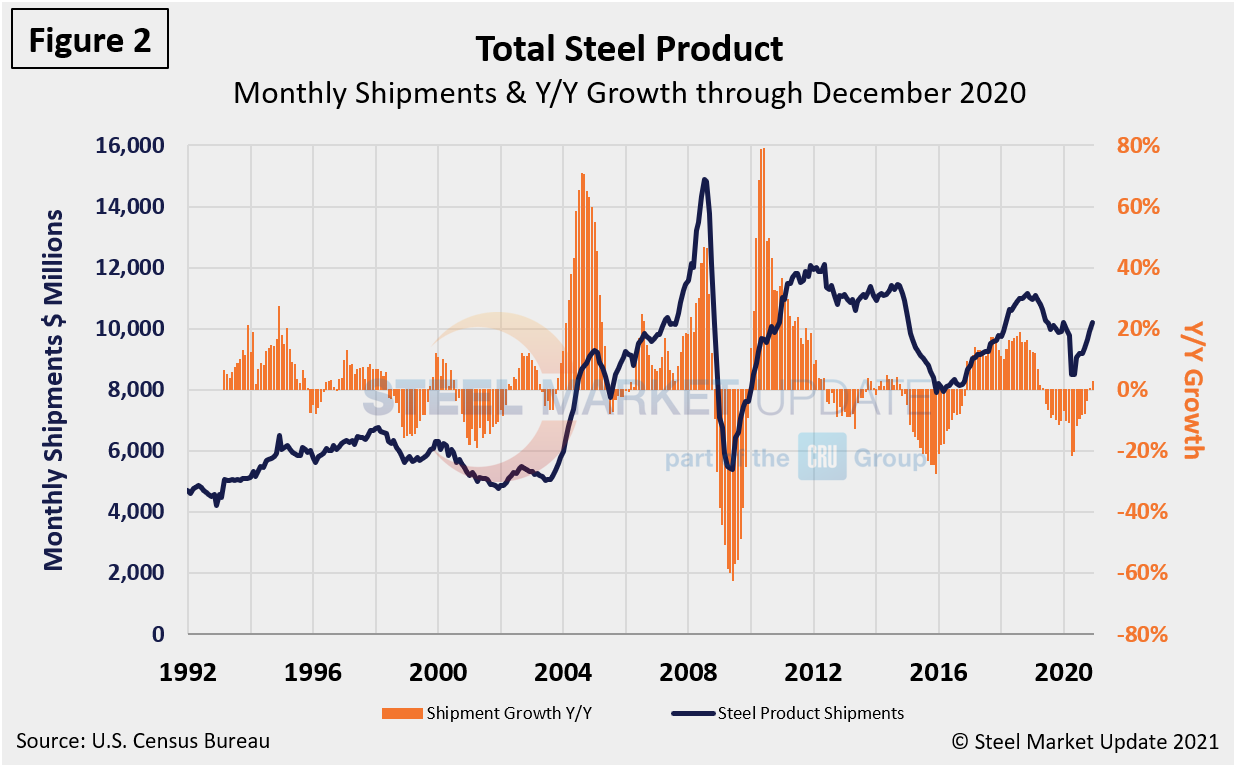
Figure 2 shows monthly steel product shipments in millions of dollars with the year-over-year growth through December. Through 2020, shipments of steel products totaled $113.5 billion, down 9.0% from year-ago levels when shipments were $124.7 billion. Shipments of steel products most recently peaked in November 2018, then began a 17-month decline through April 2020. Although the growth rate has declined from 18.6% in August 2018 to just 2.8% through December, shipments of steel products are up 24.2% since reaching bottom this past April.
The Census data in Figure 2 compares well over the long term with the American Iron and Steel Institute weekly crude steel production shown in Figure 3. Figure 2 is in dollars and Figure 3 is in tons, yet they paint a similar picture. Since the freefall from the first wave of the pandemic that came to an end in late May, steel production has been on the rebound, according AISI data shown on a four-week moving average basis. Crude steel production still remained down by 10.2% in the week ending Jan. 30 year over year.
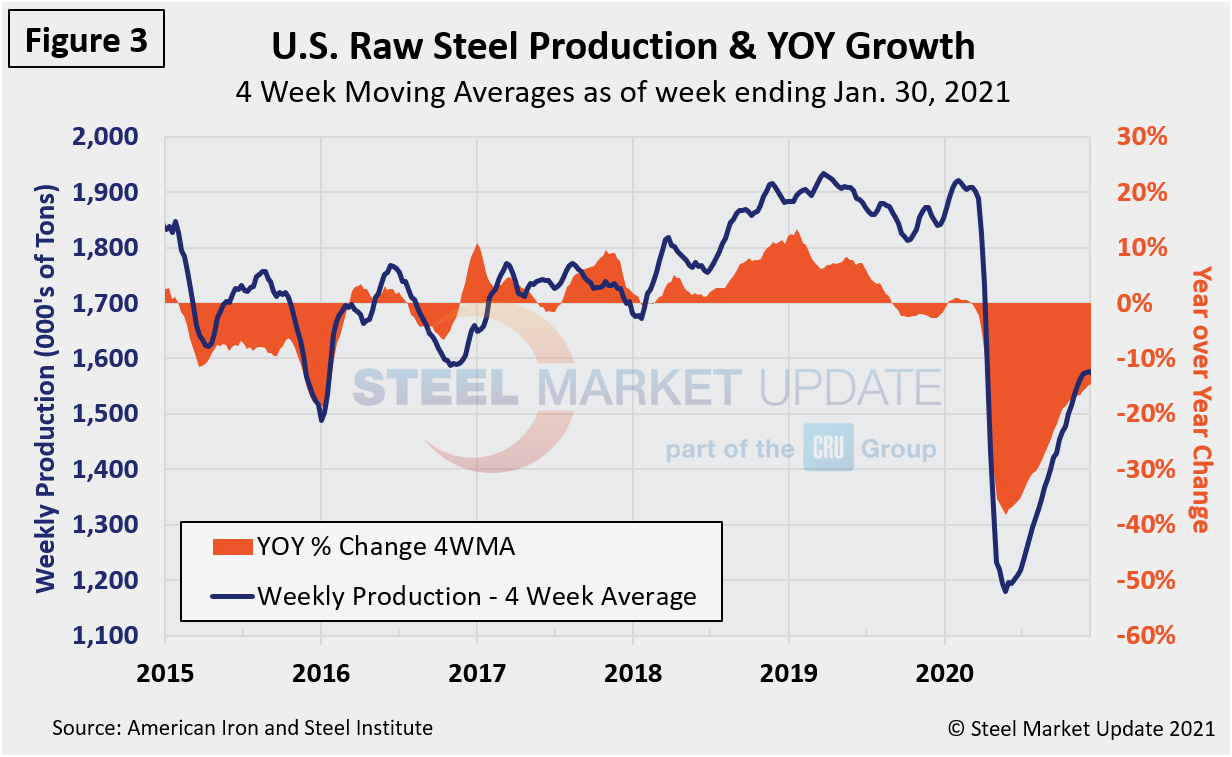
Figure 4 shows shipments and new orders on a monthly basis for all steel products since 2010. New orders declined much more than shipments last April, but were back in balance by June and have now exceeded shipments. However, with a slight curtailment in new orders, likely due to record high steel prices, the gap has tightened over the past two months.
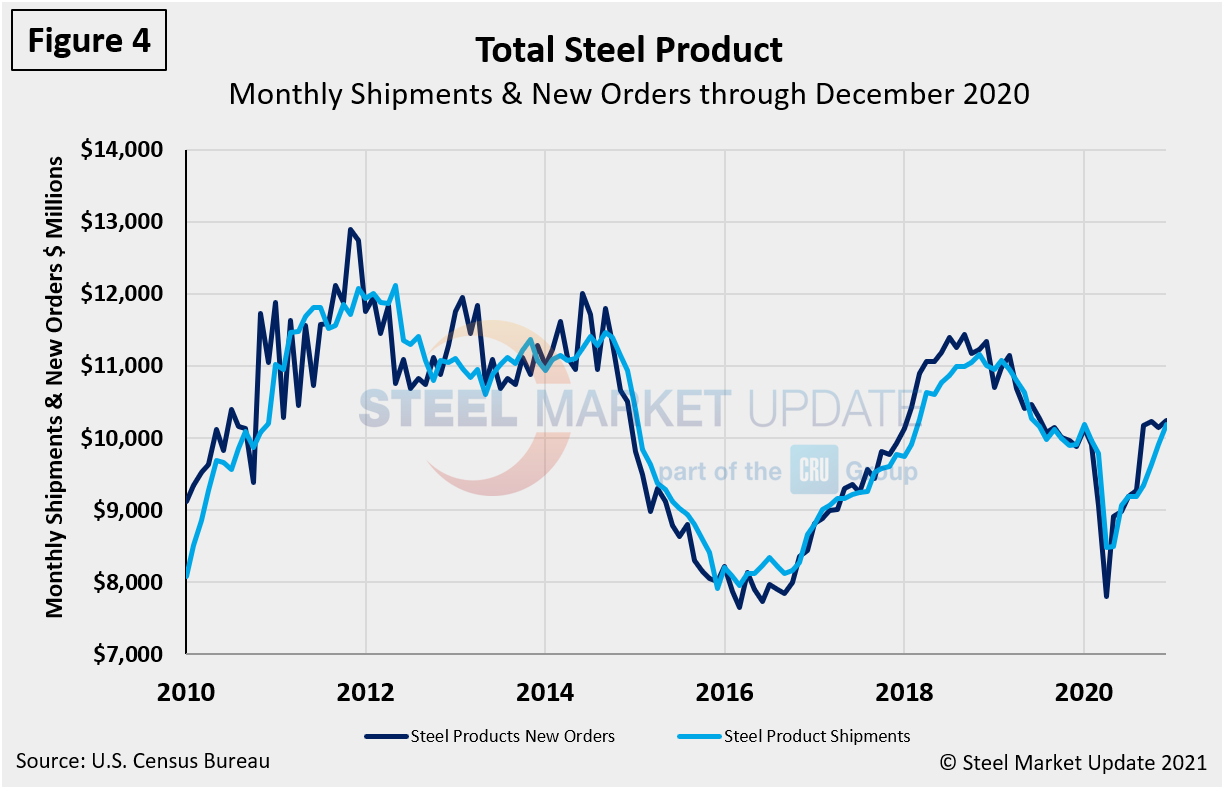
Figure 5 shows the same total shipment line as Figure 2, but now includes the inventory-to-shipment (IS) ratio. The IS ratio shot up in April, but has since declined to the recent norm, presently at 1.82% through December. The IS ratio is a measure of how much inventory is necessary to support the level of shipments, thus the lower the IS ratio the better. Shipments have improved by nearly 24.2% since May.
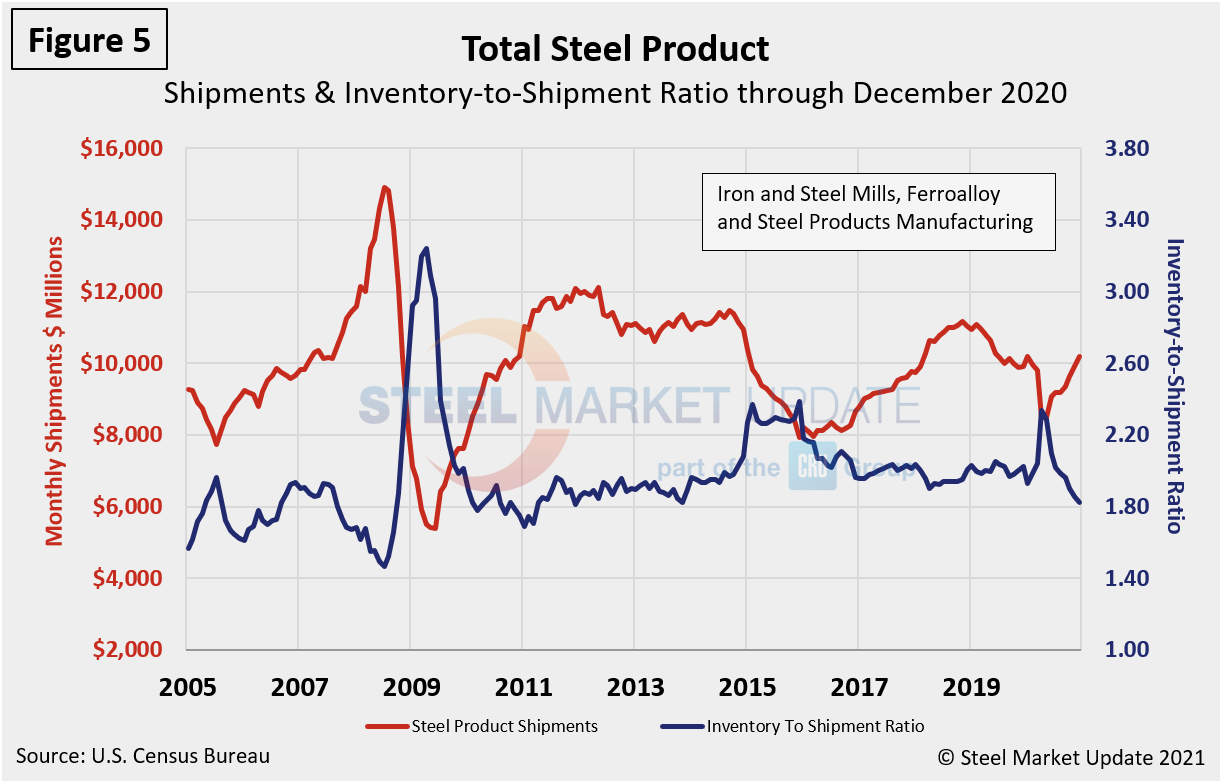
Figure 6 shows total inventory in millions of dollars and repeats the inventory-to-shipment ratio shown in Figure 5.
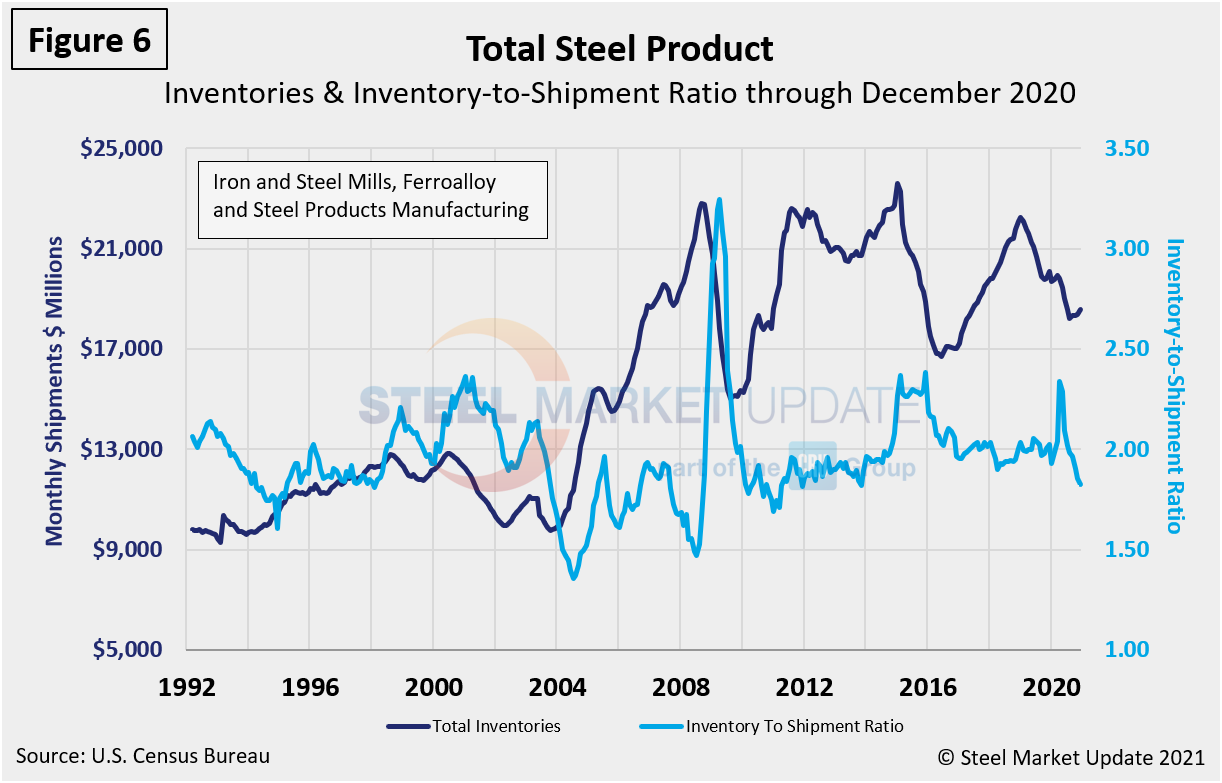
SMU Comment: The recession of 2009 is the only real comparison we have to the pandemic-driven decline in both manufactured and iron and steel product shipments. Despite the similarities, the recent downturn was neither as significant nor as prolonged as it was nearly 12 years ago. Data from the Census Bureau for steel product orders, shipments and inventories indicates that steel product shipments were hit harder than total manufacturing in April and May, but they have outpaced manufacturing in their rebound. Nevertheless, the inventory-to-shipment ratio of both total manufactured goods and products made from iron and steel have now surpassed pre-pandemic levels.
By David Schollaert, David@SteelMarketUpdate.com



